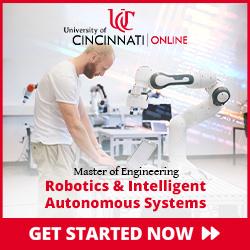Torc Robotics Performs Successful Fully Autonomous Product Validation
Autonomous trucking company backed by Daimler Truck achieves productization as it works toward a 2027 commercial launch
Torc Robotics, an independent subsidiary of Daimler Truck AG and a pioneer in commercializing self-driving vehicle technology, today announced it began successful advanced validation of the company's autonomous trucks without a driver in a multi-lane closed-course environment earlier this year.
Conducted at full operating speed of up to 65 mph to optimize fuel efficiency, Torc's driverless product acceptance test underscores Torc's evolution to productization, positioning the company to scale and commercialize safe, robust autonomous trucking solutions by 2027. Unlike a demo, this milestone highlights Torc's entry into scalable product release, with the company's applied artificial intelligence (AI) technology, system architecture, production-intent embedded hardware and safety engineering converging to shape a product that prioritizes true software best practices and safer roadways for all.
"Artificial intelligence has undoubtedly been the biggest buzzword of the year, but real-world uses are few and far between. Autonomous trucking is one of the most concrete applications for AI that can drive demonstrated revenue, business value and industry transformation - and Torc is at the forefront of creating an autonomous solution with safety, scalability and cost efficiency top of mind," commented Torc's Chief Technology Officer, CJ King. "With our long-standing tenure in the autonomous space, this milestone reinforces Torc's safety-focused commitment to driving the future of freight."
This product validation milestone exemplifies Torc's commitment to rigorous safety and maturity standards, marking a critical step from advanced engineering and development to full productization on a unified, embedded platform.
"This is a key moment in our mission to build a profitable, scalable business as the world's leading autonomous solution," commented CEO Peter Vaughan Schmidt. "We observed impressive reliability in our repeated driverless runs, which leveraged Torc's unparalleled embedded and integrated platform on Daimler Truck's Freightliner Cascadia. We look forward to unlocking the full value of autonomous driving software for customers who prioritize safety, operations costs, ease of use and reliability."
For more information on Torc Robotics, please visit torc.ai.
About Torc Robotics
Torc Robotics, headquartered in Blacksburg, Virginia, is an independent subsidiary of Daimler Truck AG, a global leader and pioneer in trucking. Founded in 2005 at the birth of the self-driving vehicle revolution, Torc has over 19 years of experience in pioneering safety-critical, self-driving applications. Torc offers a complete self-driving vehicle software and integration solution and is currently focusing on commercializing autonomous trucks for long-haul applications in the U.S. Torc operates test facilities in Albuquerque, New Mexico, and engineering offices in Austin, Texas; Stuttgart, Germany; and Montreal, Canada. Torc's purpose is driving the future of freight with autonomous technology. As the world's leading autonomous trucking solution, we empower exceptional employees, deliver a focused, hub-to-hub autonomous truck product, and provide our customers with the safest, most reliable, and cost-efficient solution to the market.
Featured Product

Online Master of Engineering in Robotics & Intelligent Autonomous Systems
The Robotics and Intelligent Autonomous Systems program at the University of Cincinnati Online offers a cutting-edge curriculum that equips students with the skills to design, develop, and implement advanced robotic systems. Through a combination of theoretical knowledge and top-ranked faculty, students gain expertise in artificial intelligence, machine learning, and robotics, preparing them for impactful careers in the rapidly evolving field of autonomous systems. Explore now!
